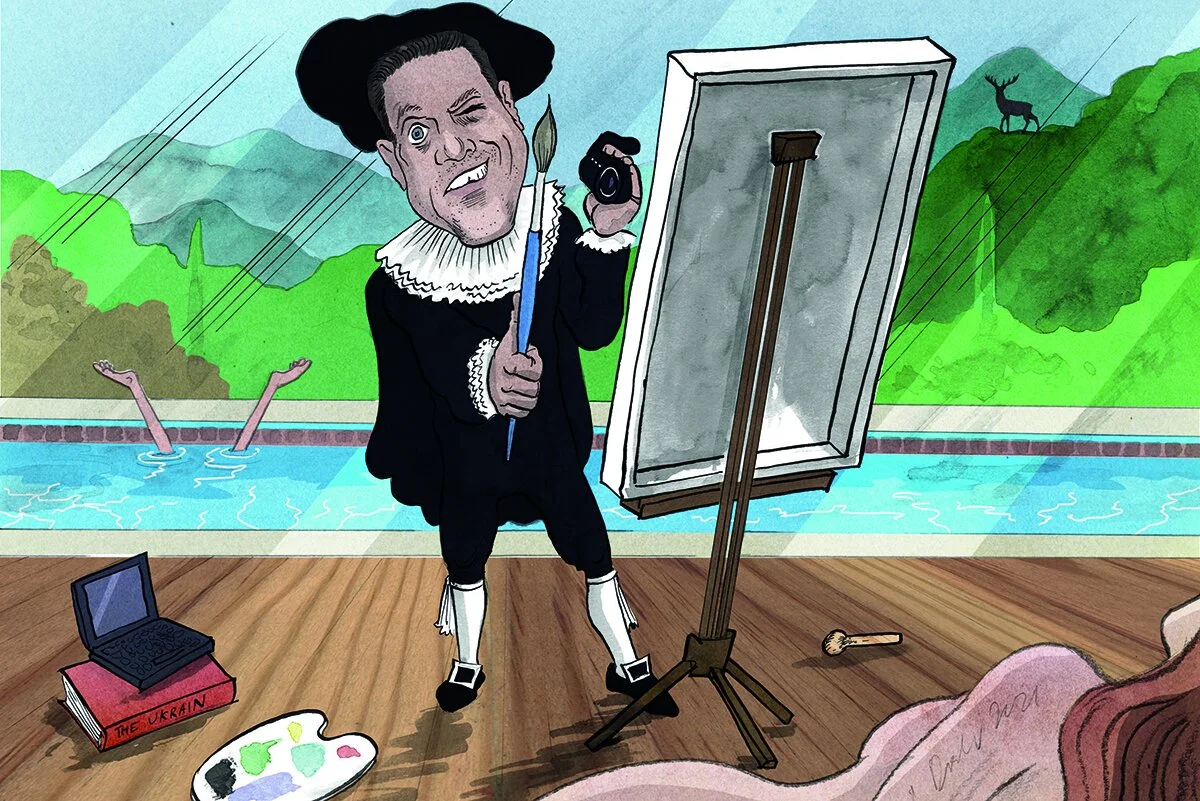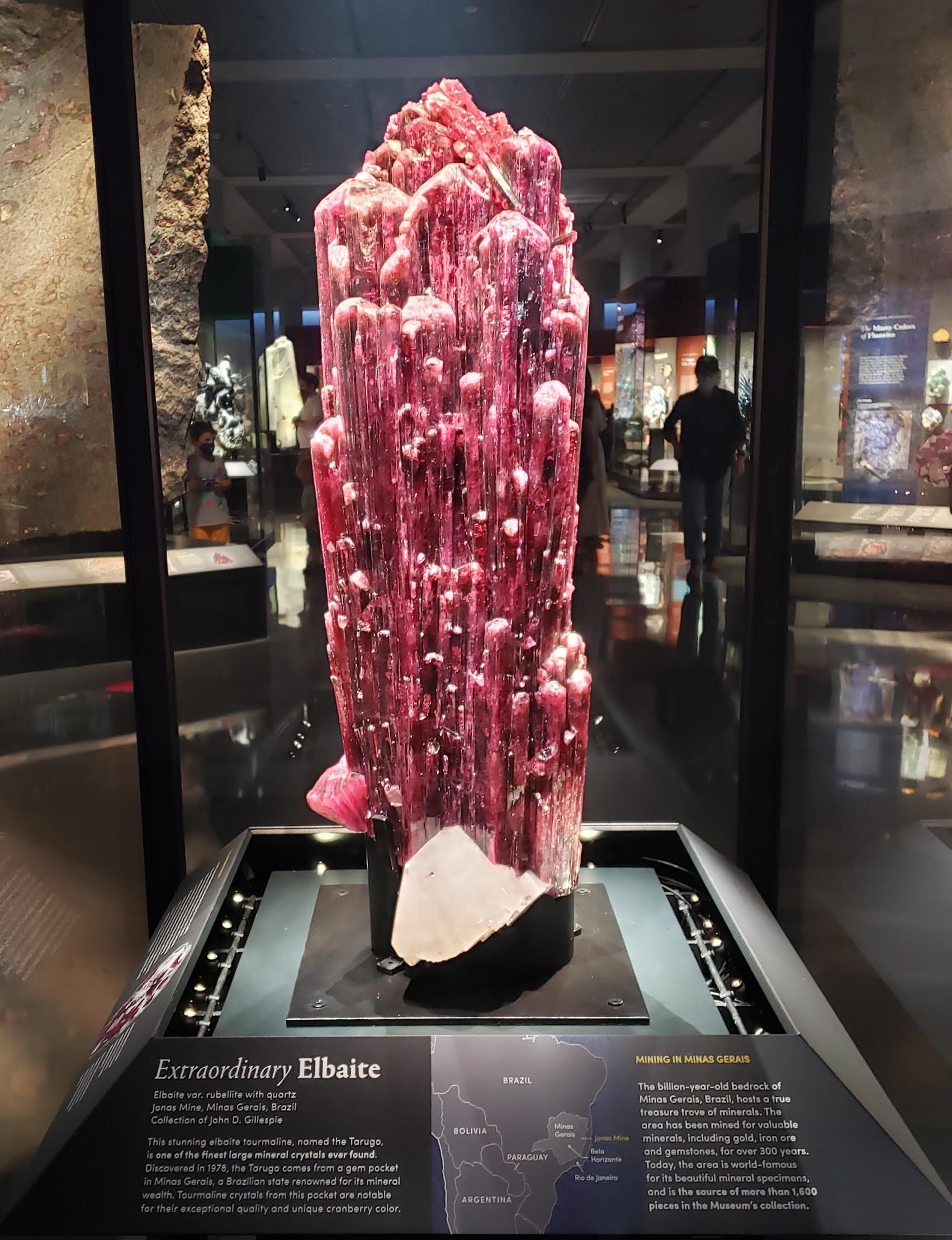The Spectator World Edition, October 2021
Hunter Biden, artist of modern life
Without vision, training or talent, Hunter Biden deigns to glue his crippling jewels onto the back of our society
Why do we keep hearing about Hunter Biden? Why is this disgraced political son and aspiring amateur pornographer now making art? Why must we even contemplate his creations? The reason is that much of our culture — at least its sanctioned, outward-facing elements — now operates ‘against nature’. I refer to that 1884 novel by the Symbolist author Joris-Karl Huysmans. À Rebours, known in English as Against Nature, is the book in which French literature dispensed with naturalism and its common-man struggles, and instead gave voice to the rot of the elite.
Before we dwell on Biden fils, let us briefly revisit Jean des Esseintes, the main character of Against Nature. He is the withered end of a once noble family. ‘Tortured by the present, disgusted with the past, terrified and desperate of the future’, des Esseintes retreats from Paris to live a life of aesthetic seclusion. He works best at doing little. He dabbles in perfumes. He grows poisonous flowers. He decorates the shell of a tortoise with so many jewels that the weight kills the animal. All the while, ‘it became perfectly clear to him that he could entertain no hope of finding in someone else the same aspirations and antipathies; no hope of linking up with a mind which, like his own, took pleasure in a life of studious decrepitude.’
It’s a Huysmans world out there. Des Esseintes would be right at home in this present moment. Our culture chastises the commoners, but it champions the decadence of our elites. For us, of course, aristocracy means a caste of celebrity, money and power. Quod licet Iovi, non licet bovi: what is permitted for Jupiter is not allowed for the ox. The noisomeness of the rot serves to remind the rest of us of what we cannot do.
That is precisely why we never stop hearing of Hunter Biden. The president’s 51-year-old son has been fulsome in his decrepitude and finds ever more depraved ways to express it. I cannot claim to have made a study of his decadence, but from what I gather, he luxuriates in foreign-influence money, through which he hires prostitutes, with whom he freebases cocaine in orgies, in which he records himself and them, whereupon he misplaces the files. And that’s just on Monday. The decadence of such a life would put des Esseintes to shame.
I would not mention such peccadilloes were they not central to this story and how Biden chooses to present himself to the world. Biden is an exhibitionist of his own wickedness. For oversharing his debasement, he is rewarded with glossy profiles, a Simon & Schuster book deal memorializing his decay, all that foreign-influence money, and the backing of those institutions, from the Secret Service to Twitter, that surround him. Quod licet Iovi…
The news that Hunter Biden has now taken up the brush aligns with the next chapter of his struggle Against Nature. His art-making has been written up more than once by the New York Times. That is twice more than most artists get and an easy tell of the elite press trolling the rest of us. ‘As an undiscovered artist, he is better situated than most,’ we read. You bet he is. We also learn that Biden lives in the ‘Hollywood Hills off Mulholland Drive, with a Porsche Panamera in the driveway, plenty of natural light and a pool house he has transformed into an art studio’.
Here in this lofty aerie, surrounded by red-tailed hawks, down the hill from David Hockney’s red barn, he creates work ranging from ‘photographic to mixed-media to abstract works on canvas, yupo paper, wood and metal’. His paraphernalia include a metal straw — not for drugs! Why would you think that? — through which he blows pigments across his compositions.
‘For me, painting is much more about kind of trying to bring forth what is, I think, the universal truth,’ he blabbers. The abstractions he creates, like the sentiments he conveys, are the stuff of dorm-room posters. ‘I don’t paint from emotion or feeling, which I think are both very ephemeral,’ he ponders. But of course it is all meant to be emotion and feeling, a look inside the mind of a Biden. Were it not, these creations would be little more than the illustrative tricks of a street artist.
More recently Biden has moved to mixed media and even more explicit images of himself. He starts with a distorted selfie — of which we have already seen plenty — and writes with gold ink around his dog tags and Rolex watch. He dilates on his dead brother Beau, his deceased mother and sister, his own travails: ‘I want to make it clear: I don’t see that tragic moment as necessarily resulting in behaviors that lent themselves to addiction. That would be a cop-out.’ These words are directly reproduced from his book, Beautiful Things, even down to the punctuation. Everything here is a self-portrait, all serving the scripted story of full disclosure. If Hunter Biden’s art belonged to a school, it would be post-exhibitionism.
This fall the Georges Bergès Gallery in New York will exhibit 15 of these masterpieces. I have never heard of the gallery, but the owner was once accused of assaulting a man with a knife. He pleaded no contest to making terrorist threats. ‘I was a kid; we all make mistakes,’ he explained. The gallerist is asking up to $500,000 per Biden. He promises an artist who ‘incorporates oil, acrylic, ink and the written word to create unique experiences that have become his signature’. Sales will be open to foreign nationals, and the gallery will ‘not share information about buyers or prospective buyers, including their identities’, according to White House press secretary Jen Psaki — all in the interest of full transparency.
A self-portrait by Hunter Biden. Credit...Hunter Biden and Georges Bergés Gallery
Critics of this White House rightly lambaste these dealings as an invitation to what, in more innocent times, we called ‘collusion’. But frankly, political corruption is de trop. Through his art, Biden promises a far more compelling prospect: cultural corruption. ‘No conflict, no interest’ has long been the mission statement of the art world. Biden has been in the vanguard of our public debauchery for decades. His designs, well illustrating his self-serving self-loathing, now place him squarely in the avant-garde of performative decadence. In a world that places exorbitant value on a floating basketball by Jeff Koons or a spin painting by Damien Hirst — in other words, on nonsense by nonentities — who is to say that Biden’s cloudsmoke effusions are not worth as much or even more?
‘All around him,’ Biden writes in one self-portrait, ‘beautiful things tangled colors cradled mercy made real rose up and he began again to write a new story.’ His turn to art, and the false profundity and faux-redemption he indulges in, are as irredeemable as the rest of this man’s privileged life. If his existence has a point, this is it. ‘His contempt for humanity grew fiercer, and at last he came to realize that the world is made up mostly of fools and scoundrels,’ Huysmans writes of des Esseintes.
Without vision, training or talent, Hunter Biden deigns to glue his crippling jewels onto the back of our society. We are the ones meant to be crushed under the weight of his self-regard. We may never plumb the depths of that infamous laptop, but we’ll always have Biden’s screensaver art, tinctured in freebase crackle.











